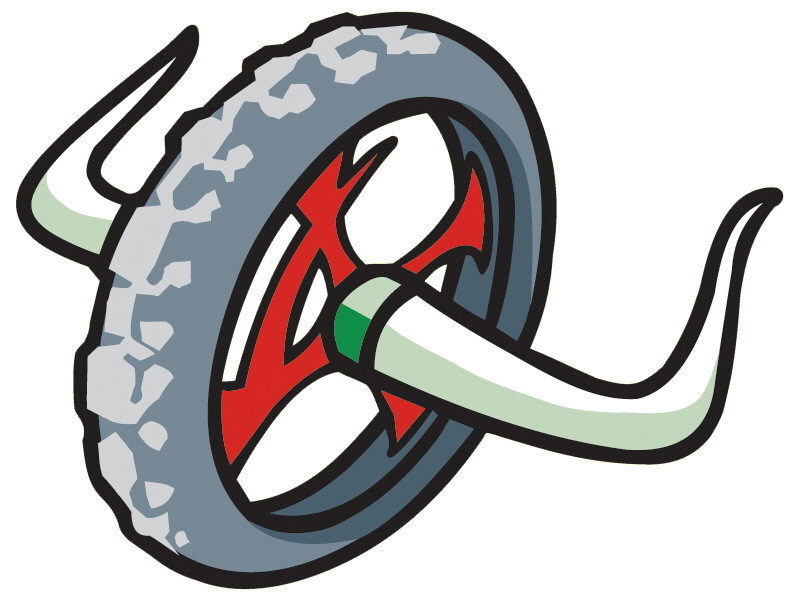Your frame is currently in the welding process, the most time-consuming part of the frame building process.
Seven's welders are among the most skilled artisans in the industry. Indeed, their work has been referred to as "kinetic sculpture" for its meticulous, elegant look.
Oxygen, dirt, and grease are the prime enemies of welding. When any of these contaminants react with the weld, the metal can become brittle, weakening the weld dramatically. To prepare your frame for welding, we first remove, or purge, all of the airborne oxygen, nitrogen, and other gases from the weld area by forcing a positive flow of argon through the tubes. Then, we use a specially-modified TIG (tungsten inert gas) welding torch that immerses the welding area in argon gas. This combination of external and internal mechanisms allows us to bathe the frame in an inert gas--argon--and therefore maintain an oxygen-free environment during welding. To further prevent weld contamination, welders continue to wear cotton gloves throughout the process.
Maintaining an even flow of argon throughout the frame, we weld all of your frame's joints. To maintain proper alignment, the frame's joints are welded in a precise, staggered pattern. For example, we weld a portion of the right side of the head tube/top tube joint first, then follow it immediately by the left side, and continue to alternate section by section, until the entire frame is complete. This decreases the amount of post-weld alignment, or cold-setting, that the frame requires.
Because a straight frame is so important, we check your frame's alignment a minimum of three times during welding to ensure that it falls within our specifications. Should a frame show any signs of misalignment during the welding process, we alter the weld sequence process or cold-set the weld to pull the frame back into perfect alignment.
Once your frame has been welded and its alignment checked, it's ready to have brake bosses, cable guides, rack mounts and other parts welded on. These parts are tacked and welded to the frame using a method similar to that used to tack the frame. Specially-made fixtures hold the parts in place to ensure proper placement and alignment. After another look at alignment, we weld the parts onto the frame.
Ready for its alignment to be scrutinized one last time in final machining, your frame is not far from completion.
또 너무 긴 내용입니다..죄송합니다...
이제 프레임 제조의 거의 마지막 단계 이기 때문에 더욱더 궁금해 집니다
장문의 내용이라 귀중한 시간 내시기 곤란 하시겠지만
그래도 염치 불구하고 부탁 드립니다..
해석 부탁 드립니다..
Seven's welders are among the most skilled artisans in the industry. Indeed, their work has been referred to as "kinetic sculpture" for its meticulous, elegant look.
Oxygen, dirt, and grease are the prime enemies of welding. When any of these contaminants react with the weld, the metal can become brittle, weakening the weld dramatically. To prepare your frame for welding, we first remove, or purge, all of the airborne oxygen, nitrogen, and other gases from the weld area by forcing a positive flow of argon through the tubes. Then, we use a specially-modified TIG (tungsten inert gas) welding torch that immerses the welding area in argon gas. This combination of external and internal mechanisms allows us to bathe the frame in an inert gas--argon--and therefore maintain an oxygen-free environment during welding. To further prevent weld contamination, welders continue to wear cotton gloves throughout the process.
Maintaining an even flow of argon throughout the frame, we weld all of your frame's joints. To maintain proper alignment, the frame's joints are welded in a precise, staggered pattern. For example, we weld a portion of the right side of the head tube/top tube joint first, then follow it immediately by the left side, and continue to alternate section by section, until the entire frame is complete. This decreases the amount of post-weld alignment, or cold-setting, that the frame requires.
Because a straight frame is so important, we check your frame's alignment a minimum of three times during welding to ensure that it falls within our specifications. Should a frame show any signs of misalignment during the welding process, we alter the weld sequence process or cold-set the weld to pull the frame back into perfect alignment.
Once your frame has been welded and its alignment checked, it's ready to have brake bosses, cable guides, rack mounts and other parts welded on. These parts are tacked and welded to the frame using a method similar to that used to tack the frame. Specially-made fixtures hold the parts in place to ensure proper placement and alignment. After another look at alignment, we weld the parts onto the frame.
Ready for its alignment to be scrutinized one last time in final machining, your frame is not far from completion.
또 너무 긴 내용입니다..죄송합니다...
이제 프레임 제조의 거의 마지막 단계 이기 때문에 더욱더 궁금해 집니다
장문의 내용이라 귀중한 시간 내시기 곤란 하시겠지만
그래도 염치 불구하고 부탁 드립니다..
해석 부탁 드립니다..






 손님
손님
댓글 달기